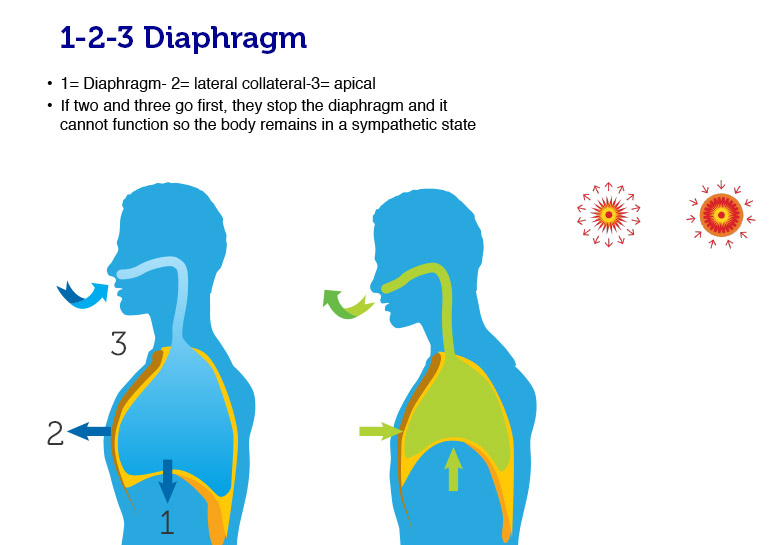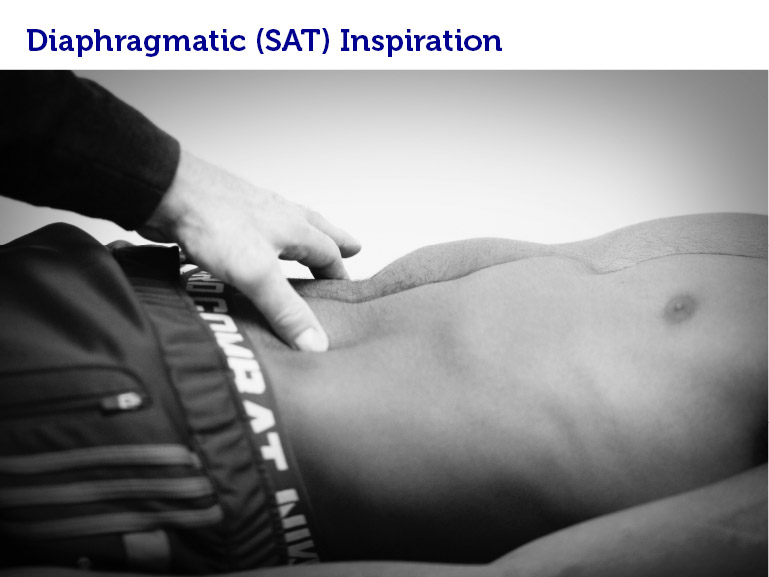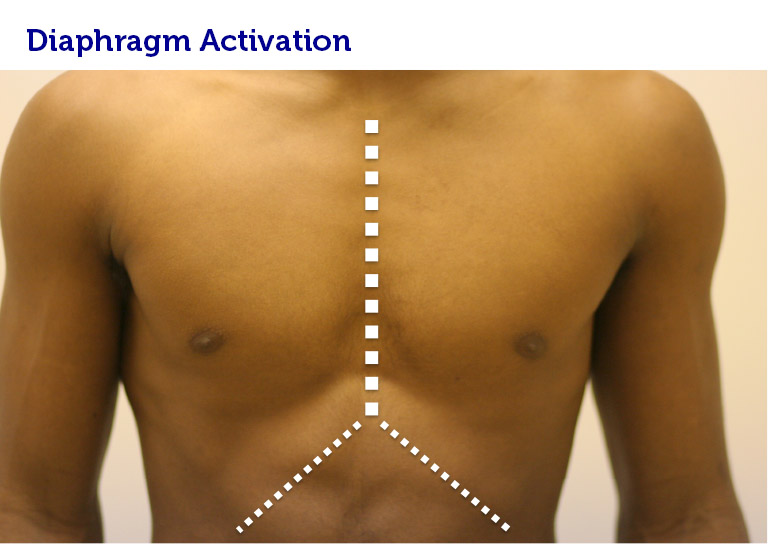Breathing is the most important thing your body does – and you’re probably doing it wrong.
Think about the last time you got the wind knocked out of you, caught a bad cold, or even pushed through a conditioning double sessions in the August summer heat. Breathing is generally taken for granted because it is unconscious and automatic – but in those moments, you remembered how important it is!
We breathe an average of 5000-30,000 times per day. Most people initiate the breath from the muscles and ribs of the chest and lower neck region – an area we call Zone 2. If you’re breathing from Zone 2, your diaphragm becomes the rigid base of support for your breathing which actually requires more effort. You’re working harder. You’re getting less oxygen. And your muscular and nervous systems are probably both out of balance as a result.
Let’s look at an easier way. It will remind you of how newborn and young children breathe.

Diaphragmatic Breathing
Look at the diagram on the left above. Proper breathing begins with the diaphragm in Zone 1. Next, the lateral collateral chest wall in Zone 2 expands. Then the apical chest and lower neck complete the inspiration in Zone 3. One breath, three zones.
Breathing out is shown on the right above, and it’s completely passive. The diaphragm relaxes and all three zones collapse, almost without effort.
In the activation process, we often call this “belly breathing.” Inhale through your nose and imagine inflating your belly like a balloon. Then release the breath through your mouth. If you’re breathing right, you’ll feel – and see – your belly inflate and deflate like in the pictures below.


Activating the Diaphragm
Most athletes are accustomed to breathing incorrectly – from the chest (Zone 2) instead of the diaphragm (Zone 1). After years of breathing like this, there is often significant tension in Zone 2 that actually inhibits diaphragmatic movement. You might need to re-train and re-activate your muscles to get your diaphragm going correctly.
You can release tension and activation your diaphragm with by applying manual pressure in the area shown below. The activation site is the border of the lower ribs and abdomen on each side, with extension upwards in the midline along the sternum from the xiphoid process to the sternal notch. It forms an upside-down “Y” shape.
Keep in mind that these areas can be very sensitive – especially if you’re new to activation!

I have 11 years of medical training and more than 25 years of practice in family and sports medicine – but I can honestly say I never appreciated the magnificence of correct breathing until I discovered Be Activated techniques. No direction is typically given to players and coaches on breathing. The prevailing idea seems to be that if you’re short of breath, you’re out of shape and should push harder.
There’s a better way. Start trying it; you’ll see.
Share Tweet










